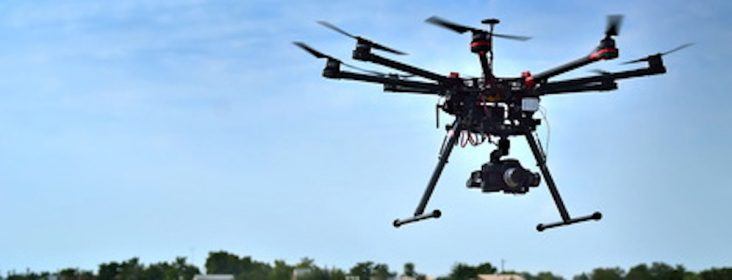Drone notes: The parachute, the blimp and the young entrepreneur
by March 26, 2016 7:34 pm 372 views

Flying with a drone for video and photo productions
As drones continue to be a more utilized technology, the maturation of the industry is taking place. Efforts are in place to ensure safety and bring the technology to new industries in new and innovative ways including agriculture, construction and entertainment.
Israeli Startup creates a parachute for drones
Now that drones are in full swing and the price of a damaged drone can be high, owners, regulators and manufacturers are looking at ways to make drones safer. One Israeli startup is seeking to help solve the problem with a parachute. The parachute will allow a drone to fall safely to the ground keeping the drone in one piece and helping protect persons on the ground should the drone have an error and plummet to the earth.
The company is called ParaZero and was founded by CSO Amir Tzaliach in 2012. According to the article in Geekwire:
“ . . . the idea for the parachute concept came up during a previous drone related venture when the founders were out testing one of their UAVs. Suddenly an error occurred and the drone fell out of the sky, almost killing one of them. Out of this near miss, the founders decided to build ParaZero with the focus of improving drone safety.”
Drone Blimp
For years, blimps have patrolled the skies at various events getting overhead shots for television viewing audiences. A new drone developed by Swiss engineers will allow a drone to fly above large crowds with the safety and efficiency of a blimp. In addition, the developers say the drone can interact with crowds.
The drone is known as Skye and, according to the developers, can fly for up to two hours on a single charge. The result is an efficient, agile, lightweight and safe option for advertisers to be seen in front of bigger crowds.
According to a Reuters article:
“Aerotain says its technology could disrupt the advertising industry by allowing companies to engage directly with the public in a way never seen before. At public events, such as a sports game or concert, Skye can autonomously float above the crowds or with a pilot at the controls.”
Young Drone Entrepreneur
Using drones for agriculture is something many in Arkansas understand. Evan Palmer, a sophomore in high school in Amherst, Neb., is working on a new fixed-wing drone to help farmers according to an article on Omaha.com.
Palmer applied for and received a $1,000 grant from the Nebraska Farm Bureau and has picked up various sponsors along the way.
The drone will help farmers analyze crops saving time and money.
Palmer learned to build the drone himself using a 3D printer in the process to build certain components.
Commercial Drone impacts among industries
According to Goldman Sachs, the future of drones is not pizza delivery. The global investment bank believes that construction will be one of the biggest industries impacted by drones, according to a MarketWatch article.
“The largest use case for commercial drones in the immediate future will be in construction,” according to a March 2016 report from Goldman Sachs, primarily, in surveying and mapping construction sites.
However, construction isn’t the only industry that is being mentioned. In the U.S., Goldman Sachs reports the use of drones in agriculture.
“In the U.S., drones will be most widely used in agriculture, the report says, generating $1.4 billion over the next five years.”
According to Goldman Sachs, using drones for delivery is more of a “wild card.” The article also mentions cinematography as another industry which will feel the impact of drone technology.
ArkUAV Receives Federal Exemption
Local drone company ArkUAV received a Federal Aviation Administration exemption to fly drones, or unmanned aerial vehicles (UAV’s), for commercial use. The exemption allows ArkUAV to take its technology around the state.
In a press release, Brad Fausett, co-owner of ArkUAV, explained:
“Drones have unlimited application potential. We’re really excited about using this technology to give our state’s agriculture and energy industries a leg-up. We can provide 3D aerial surveys on demand so farmers can monitor crops, early detect weed invasion and infestation, and even assess storm damage. Using LiDAR, infrared sensors and other technology, our systems can inspect and map oil and gas pipelines, power lines and other critical infrastructure.”
While the energy and agriculture industries have been early adopters, real estate and land developers are using drone technology too.
“In some markets, land developers and real estate agents are using drones to help market and appraise their properties,” noted Donna Cranford, a realtor with Adkins, McNeill, Smith & Associates. “Eventually we could see the use of drones becoming routine.”
